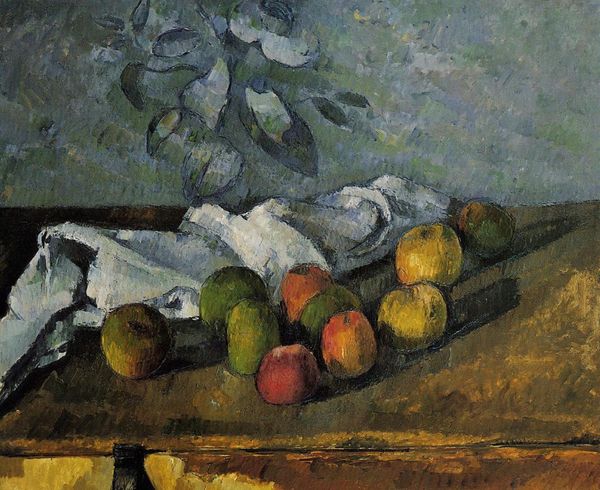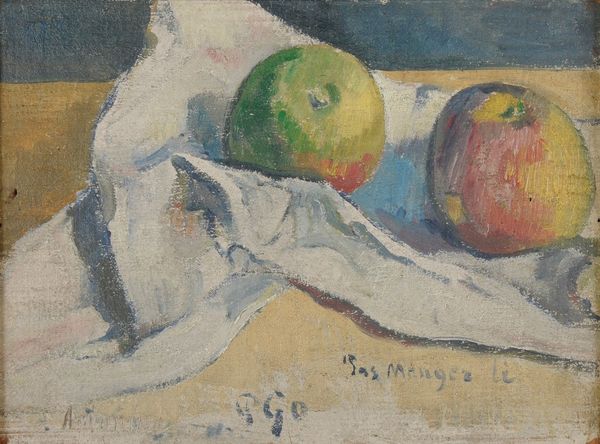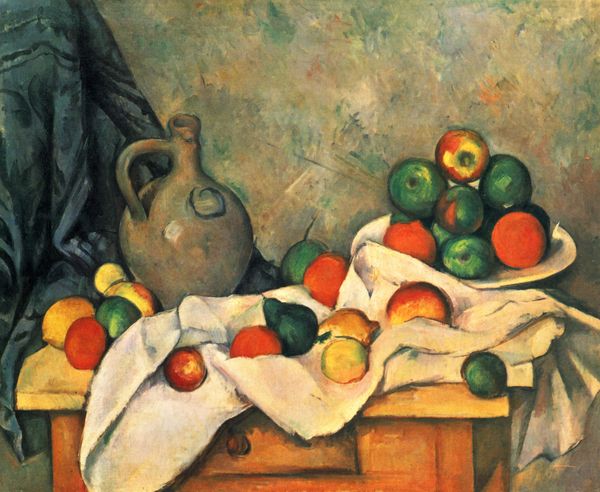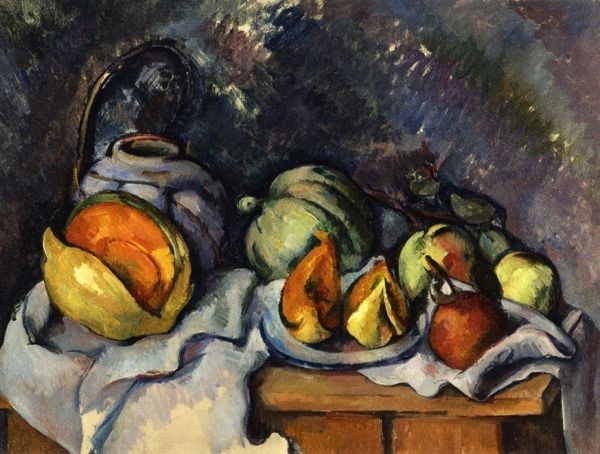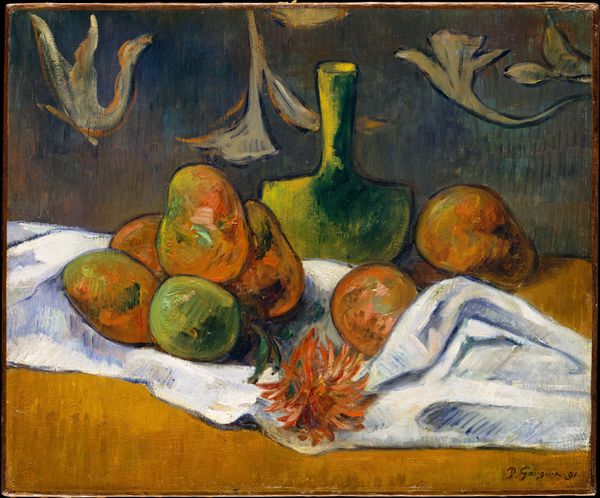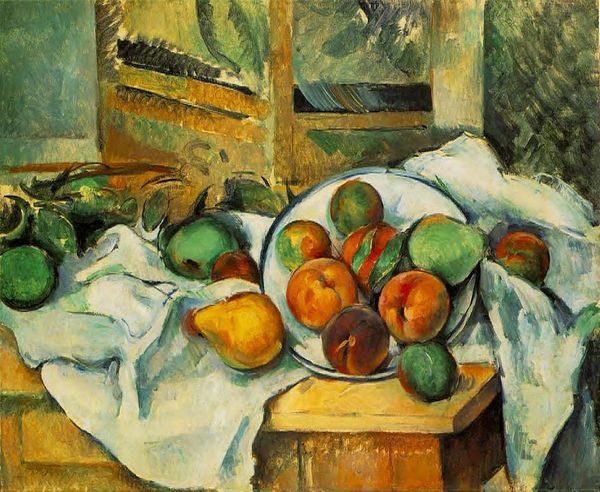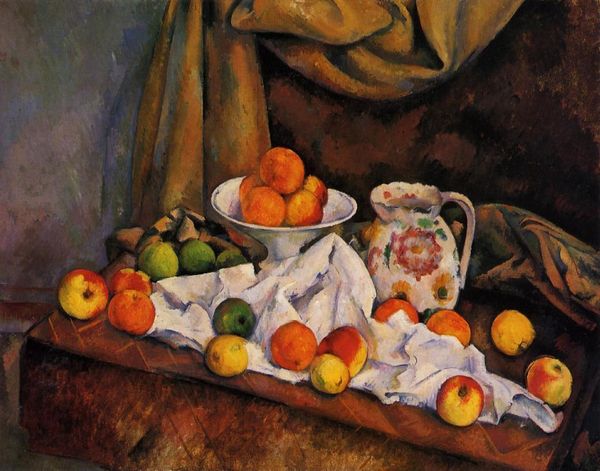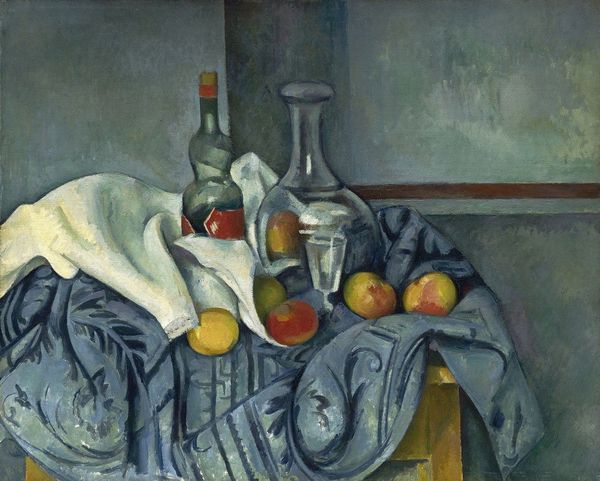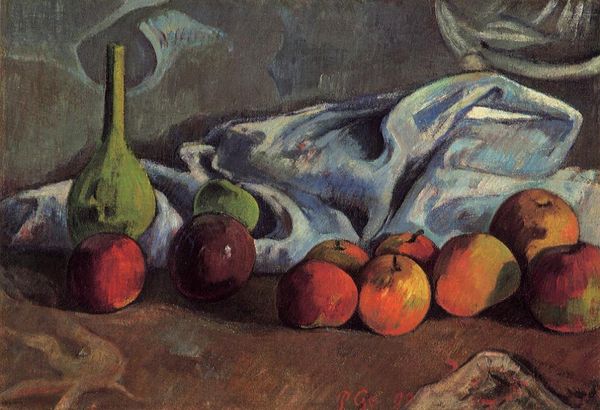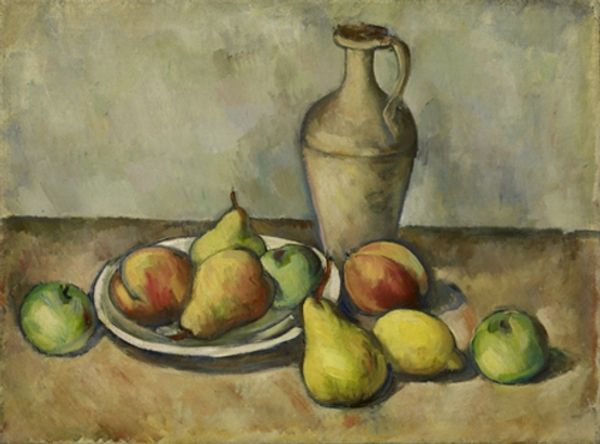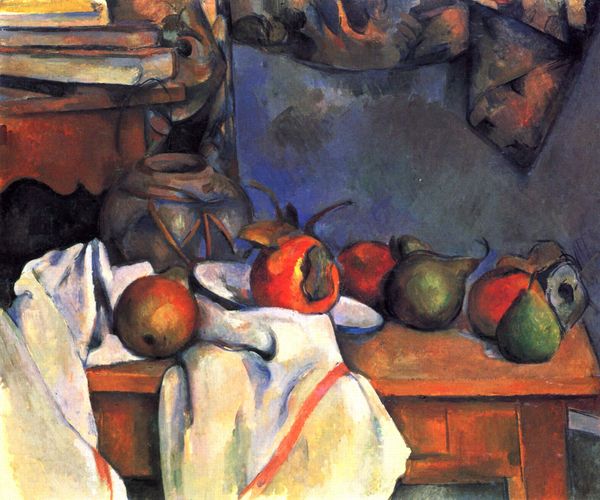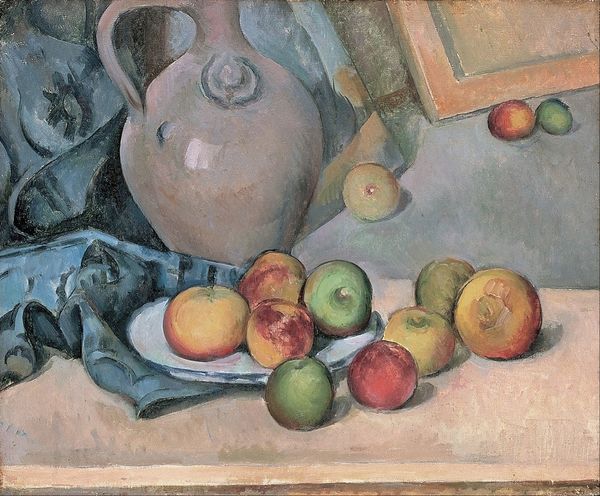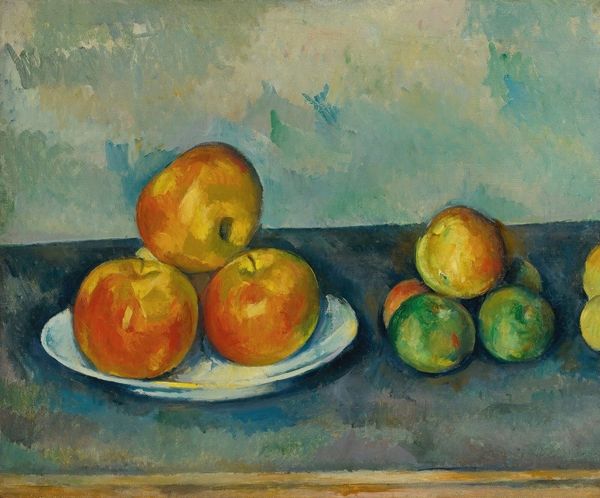
Copyright: Public Domain: Artvee
Editor: Here we have Paul Cézanne's "Milk Can and Apples," painted around 1879-1880 using oil paint. What strikes me is the unassuming nature of the still life - almost deliberately un-picturesque, a quiet observation. What do you make of it? Curator: It's interesting you pick up on that quietness. For me, Cézanne is wrestling with something far more profound than simply rendering apples accurately. He’s dismantling our very perception of space, isn’t he? The table seems to tilt, the apples feel almost sculptural. Editor: Sculptural, yes, I see that. It’s like he’s building, rather than painting them. Is that typical of his approach? Curator: Absolutely! Think of him not just as an artist, but a kind of visual philosopher. He's questioning how we see, and by extension, how we understand the world. The flatness in some areas and then sudden depth… what do you think he’s trying to tell us with that kind of approach? Editor: Perhaps that reality isn't fixed? That it shifts depending on perspective? The backdrop too, it looks more like abstract brushstrokes than discernible leaves. Curator: Precisely! That abstract quality undermines our assumptions of the "real." And it opens the door to, well, much of 20th-century art! He offered a new lens, it seems, through which to see the very act of seeing. Editor: That makes me see this piece entirely differently. I walked in thinking "still life," and now I'm thinking about the nature of reality! Curator: That’s the beauty of Cézanne. He transforms the mundane into a doorway to something… transformative. A milk jug becomes an existential prompt.
Comments
No comments
Be the first to comment and join the conversation on the ultimate creative platform.
